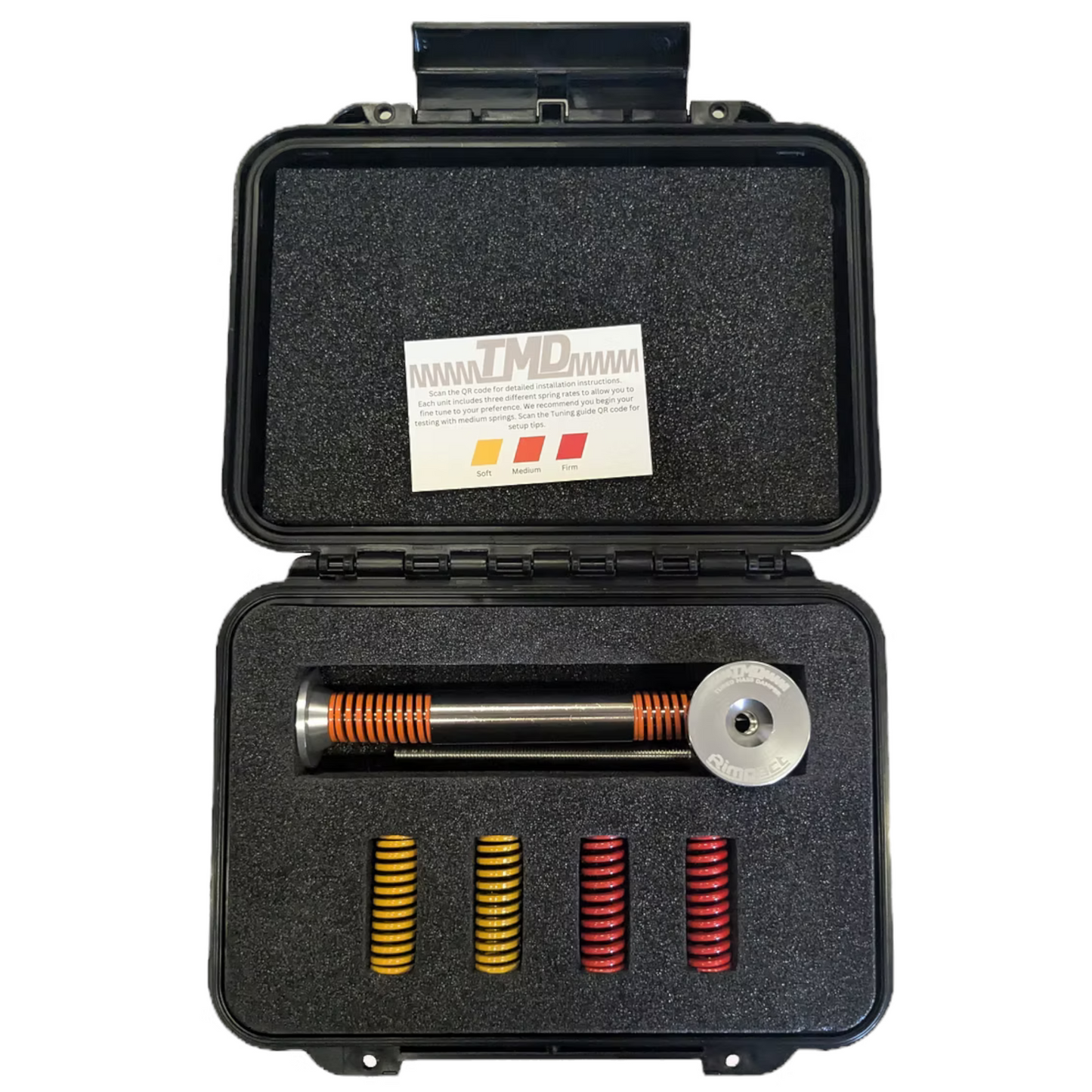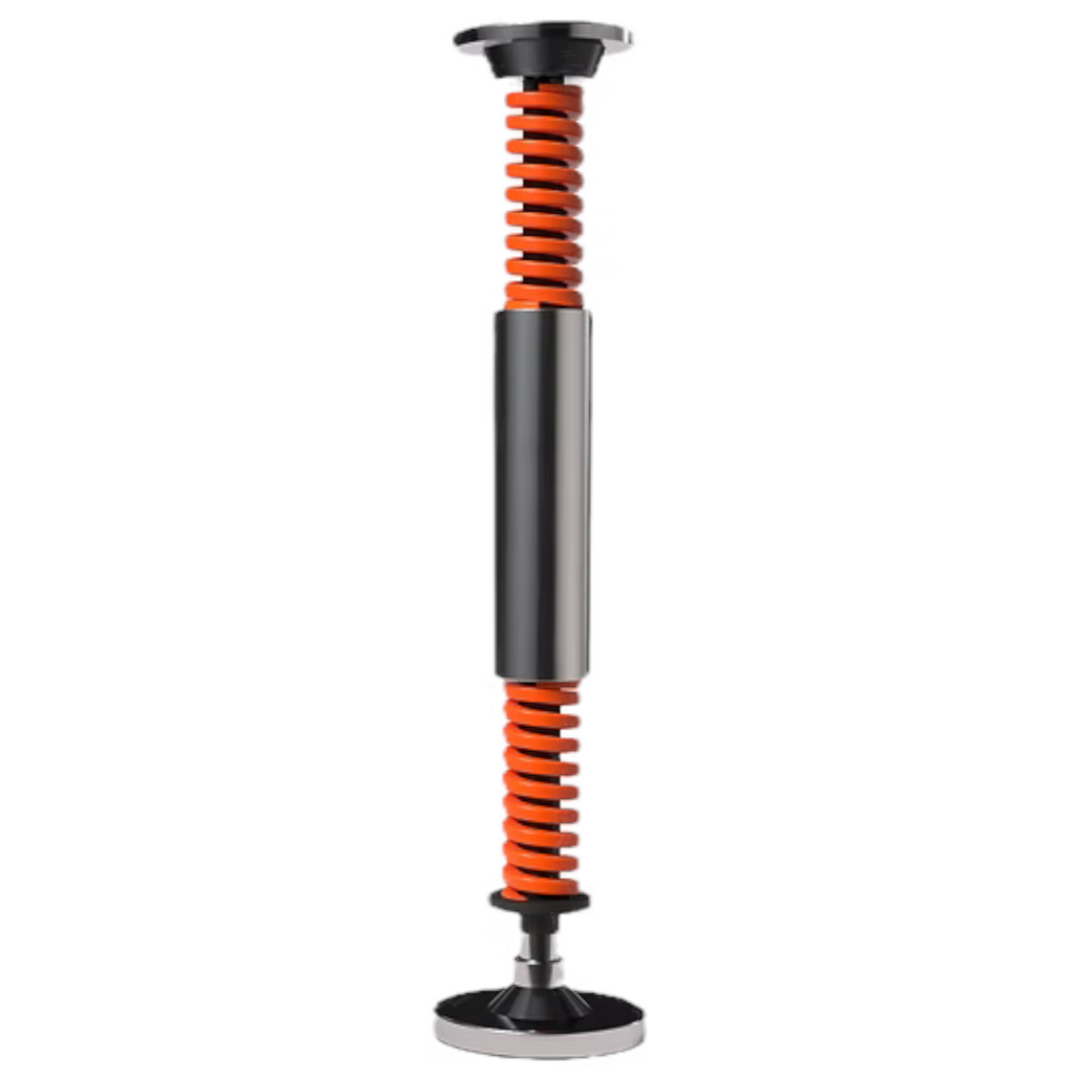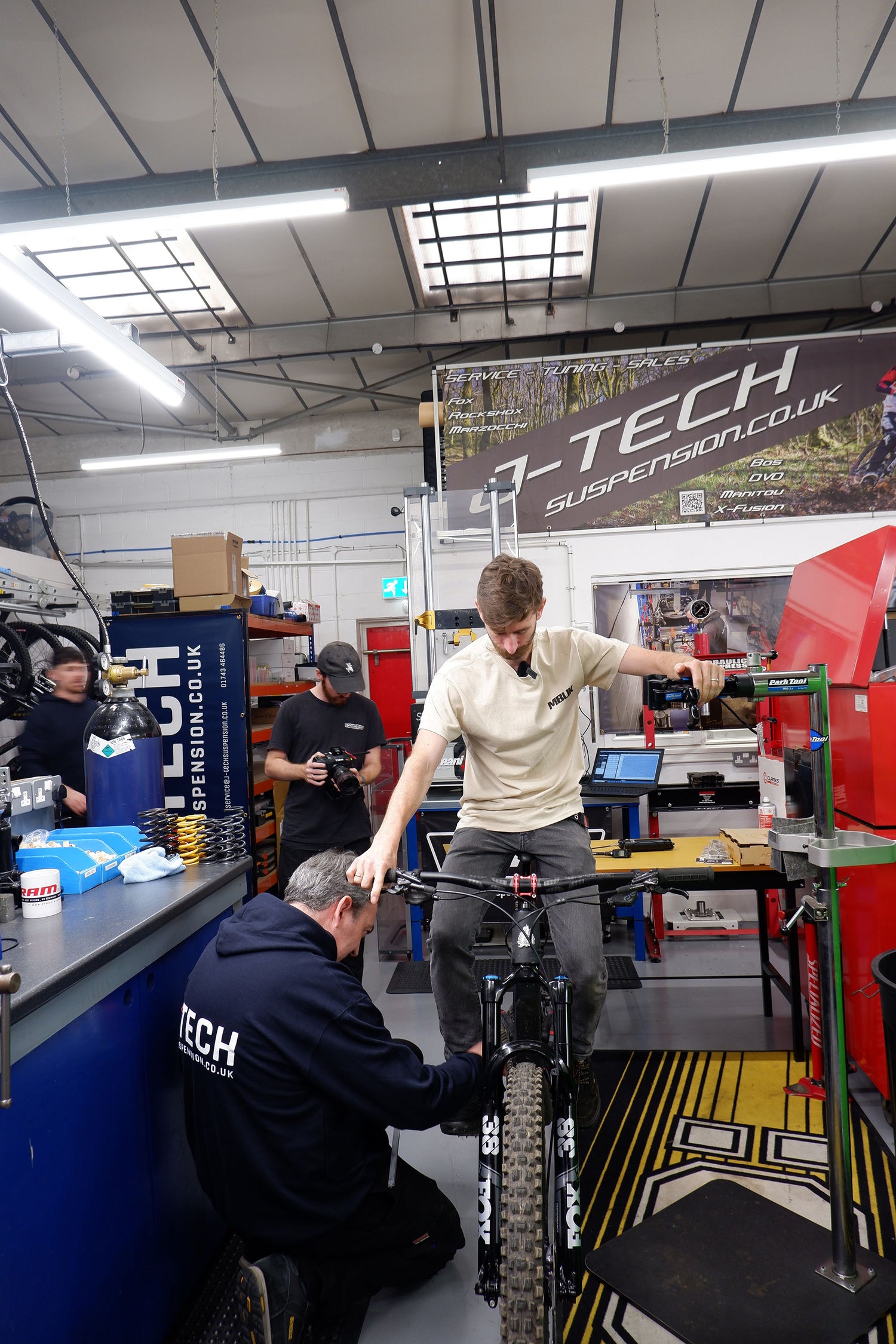Rimpact
Rimpact TMD
Rimpact TMD
SKU:RIM-TMD-MK1
Introducing the Rimpact TMD, the first internally installed mass damper for Mountain Bikes. The TMD reduces vibrations and fatigue whilst elevating confidence and composure.
Specifics
Tuneable for you
TMD ships with soft, medium and firm spring rates. Easily change out the springs to fine tune to your riding preferences.
Designed for Steerers
Igus polymer bushings allow the mass to oscillate freely between two equally rated Die Springs that feature a precise spring rate, calibrated to 3 carefully chosen frequencies. All this neatly packs into the space inside your fork steerer tube.
Mass is critical
TMD features Tungsten Heavy Metal Alloy as its counter Mass, which has a density over 2.17x that of Steel. This ensures the correct weight is used to counter the typical impact forces whilst being able to hide inside a fork steerer.
Does it make you faster? Yes.
Here's what Rimpact say...
Our testing has shown that on average, riders are around one second per minute faster in blind, timed, A/B Placebo testing.
Whilst this might not sound like much, extrapolating this out on a long DH track or a full Enduro day this advantage can make the difference from placing mid-pack to being at the sharp end of the finishers.*
*Results may vary depending on the track, rider, conditions and other variables. The above test took place over 6 locations, 6 riders and 120 timed runs ranging from 1 minute up to 6 minutes.
WHAT IS A TMD?
A commonly used device that reduces the amplitude and duration of vibrations in a greater system or structure.
Examples include:
- Buildings and large structures, where earthquakes can shake the building apart.
- In precision tools, where the rotating motors and cutting forces can reduce accuracy.
- In spaceships and rockets, where high winds can create turbulence and rock the structure on the launchpad.
- In ships to reduce the effect of rolling induced by the sea.
- And famously used in F1 cars to control nose bounce when hitting curbs on the apex of corners.
Description
Here's what Rimpact say...
Designing and building a TMD for mountain bikes presents its own set of challenges.
A "traditional" TMD is tuned to a specific target frequency with the aim to return the system it is installed in, back to its natural frequency. However, with the sheer range of frequencies and amplitudes at play in MTB, caused by changes in terrain, rider input, and suspension dynamics - means that opting for a fixed frequency approach leaves the TMD functioning outside of an ideal operational window when in use.
During development, we discovered that even when targeting a single frequency, the unit still provided noticeable benefits according to accelerometer data and rider feedback.
We realized two things:
The mass is free to be displaced, and when it is, its momentum is temporarily stored in one of the two springs that resist it. When an input force is transferred into the bike, that energy transfer is smoothed out over time, thus reducing the kind of compression spikes riders feel over rough sections of trail. This storing and returning action reduces harsh feedback by smoothing out the time it takes for the full input force to be felt by the rider which is perceived as a reduction in vibration. Benefits of this can manifest as increased front-end grip, chassis stability, lower mental and physical fatigue levels and reduced arm pump on longer runs.
The second realization was that the data we recorded of a static mass in the head tube offered a benefit over no additional mass added to the bike, and that the TMD was a similar uplift in performance again, over the additional Mass. It was the 'active' component of the TMD that made it more effective. A static mass was able to offset some of the input forces, for the same reason that displacing a heavy object requires greater force than a lighter object, but not to the same effectiveness as an equal mass within the TMD's design. The TMD was acting as a "mass with mechanical advantage" as we put it.
While we acknowledge this means the system is not a "true" tuned mass damper in the strictest sense, its real-world performance benefits speak for themselves, offering riders a smoother and more controlled ride. We set out to design a Tuned Mass Damper and ended up with something unexpected yet better than we had anticipated
Links & Info
Couldn't load pickup availability
Share



Why J-Tech?
Comprehensive Servicing and Tuning
J-TECH offers servicing and tuning for a diverse range of suspension products, ensuring a broad spectrum of customer needs can be met.
Highest Standards
The standard of servicing and tuning provided by J-TECH is unparalleled, representing the best in the industry.
Data-Driven Approach
Leveraging years of experience and data from extensive data logging and dyno testing, J-TECH provides a calculated service, eliminating guesswork, myths, and hype for a job done with the utmost precision.
Athlete Support
J-TECH backs up its expertise by supporting athletes at all levels, including a world cup DH team, DH world cup riders, and EWS riders, demonstrating their commitment to excellence.
In-House Brand
With their own brand of suspension upgrades, tooling, and spare parts at wps-mtb.com, J-TECH consolidates their experience and knowledge to offer high-quality products, aiming to optimize your suspension for peak performance.
Continuous Innovation
J-TECH is at the forefront of new technologies, constantly pushing the boundaries to provide customers with the best possible service, ensuring they stay ahead in the dynamic field of suspension technology.


